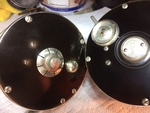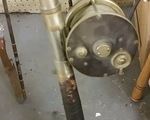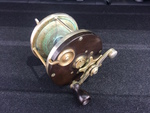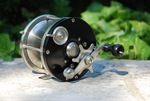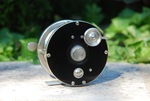Brian:
For the stylus I have only used #600 but that leaves a very rough finish on the rubber so it needs to be one step within a multi-step process. I have papers with grits from #400- #3000 but I only have a loop of #600 on the stylus.
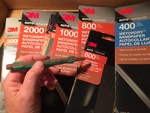
When the rubber has been damaged and the surface needs to be smoothed, my approach has been to use automotive papers (wet) by hand. The way I do it, I remove the lighter colored UV damaged rubber down to the black color using the coarsest grit I plan to use, usually #600 (wet), going over the entire rubber surface again and again by hand (in straight strokes that over a clockwise arc), as necessary until it is all black.
This is the point where the light brown halos become visible around the immovable metal. I remove the halos with the stylus. As stated above, my stylus is rigged with #600 grit. After the halos are removed and thus the entire rubber surface is black, I then go over all the rubber by hand with successively higher grits (in a clockwise arc using straight strokes) until I get it to the polish desired at around #2000. I don't use the stylus after the initial #600 grit stripping. The rest of the work after the halos are removed just uses the successively higher grits of abrasive paper (wet) under normal finger pressure- no stylus.
Here is an example using another rubber reel:
The rubber was pitted, bumpy, chipped and cracked. I cleaned and repaired it using the process in the ORCA Cleaning Restoration Guide but it still looks like a mess.
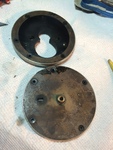
I then polished followed the process described above. In the picture below, do you see the light brown halos around the spring pins? That is what I use the stylus to remove.
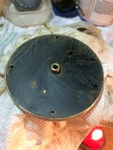
After:
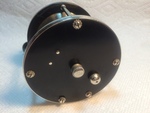
Below-left is a rubber sided reel I cleaned prior to using the stylus technique. Do you see the remaining halos? On the right is the subject EVH #621 where I used the stylus to remove halos around the oil cap assembly, since I could not remove it from the rubber. The rubber looks dark black right to the edge of the metal because I was able to use the precise edge of the stylus to get very close to the metal. Finger pressure on paper cannot get that close.
